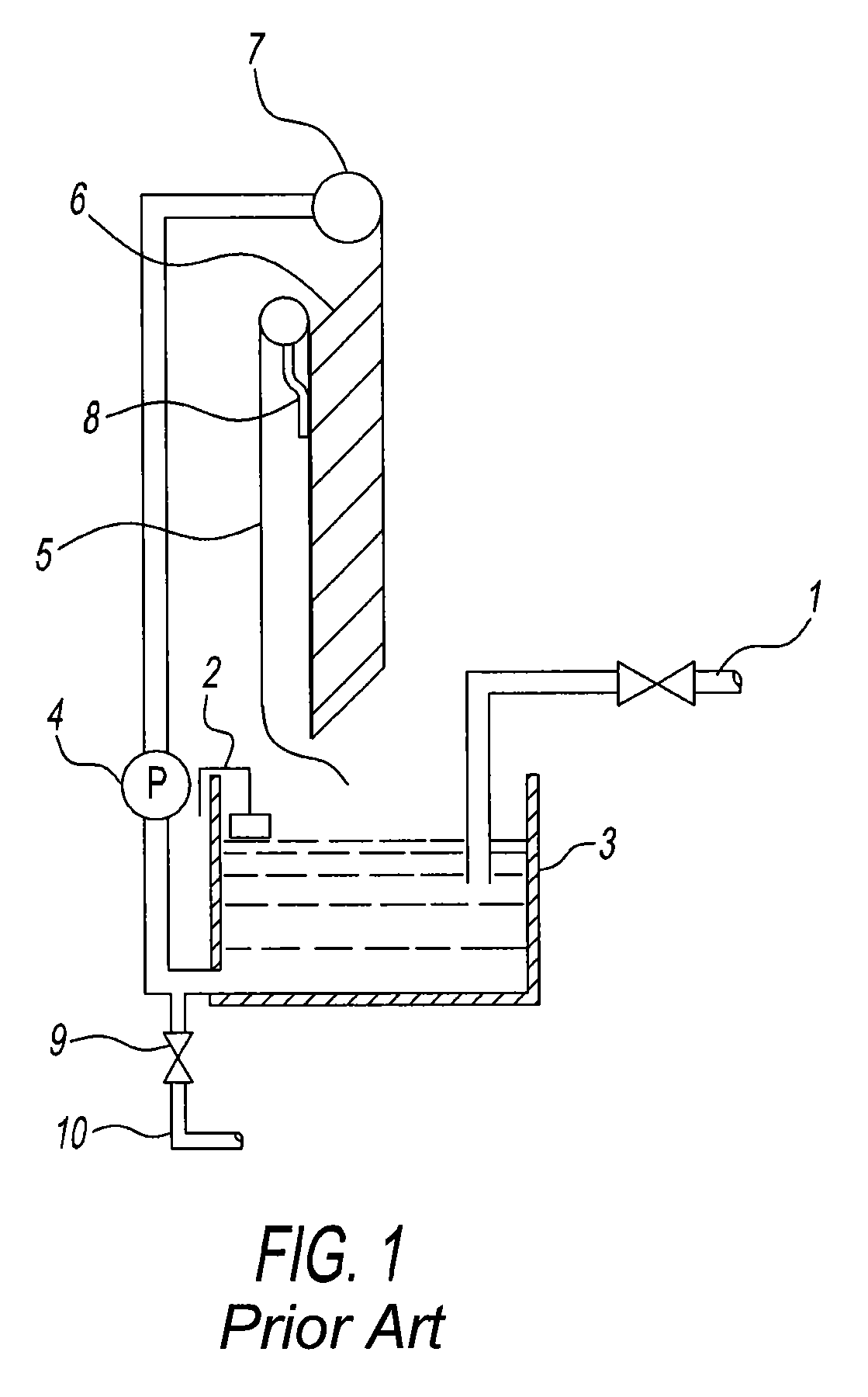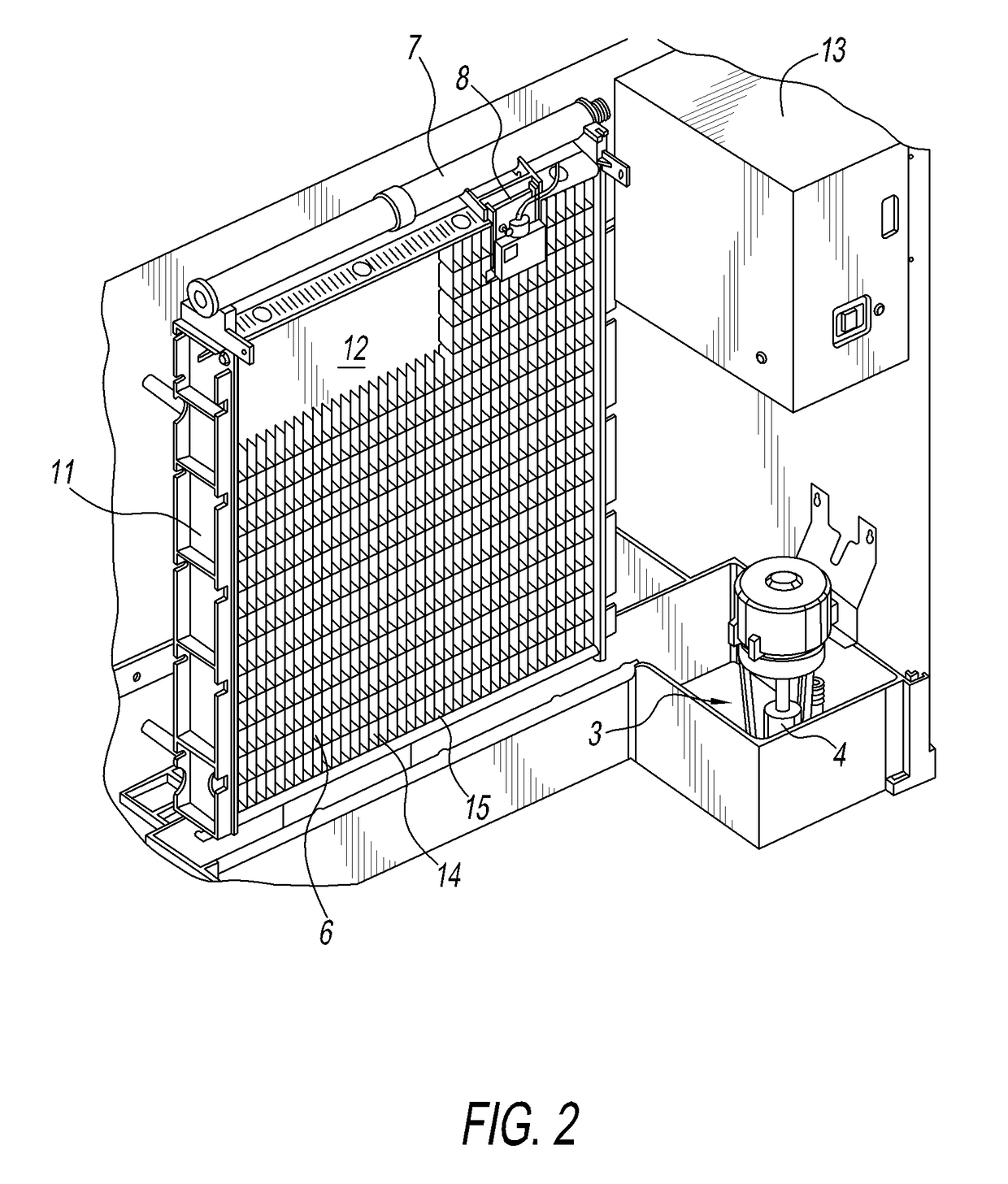Methods and apparatus for adjusting ice slab bridge thickness and initiate ice harvest following the freeze cycle
a technology of ice bridge and ice making cycle, which is applied in the direction of ice production, lighting and heating apparatus, domestic applications, etc., to achieve the effect of simple and quick adjustment, increase or decrease the ice making cycle time, and conserve water
- Summary
- Abstract
- Description
- Claims
- Application Information
AI Technical Summary
Benefits of technology
Problems solved by technology
Method used
Image
Examples
Embodiment Construction
[0026]The general configuration of an ice making machine of the present disclosure will be described in connection with FIGS. 1 and 2 which depict a prior art ice making machine. This description will show how the present disclosure differs from and improves upon the prior art.
[0027]As shown in FIG. 1, the typical water system for cube ice machines includes a water supply or inlet 1. A water level probe 2 is used to control the depth of water in a sump tank 3. A circulating pump 4 draws water out of the sump and pumps it up to a distributor tube 7. Water falls from the distributor tube 7 over the ice-forming mold, sometimes also known as an evaporator plate 6. Water curtain 5 keeps water from splashing out of the front of the water compartment and directs water that does not freeze back into the sump tank 3. An ice thickness sensor or probe 8 is used to monitor the build-up of the ice bridge on the front of the ice-forming mold 6. The ice thickness sensor initiates the ice harvest c...
PUM
 Login to View More
Login to View More Abstract
Description
Claims
Application Information
 Login to View More
Login to View More - R&D
- Intellectual Property
- Life Sciences
- Materials
- Tech Scout
- Unparalleled Data Quality
- Higher Quality Content
- 60% Fewer Hallucinations
Browse by: Latest US Patents, China's latest patents, Technical Efficacy Thesaurus, Application Domain, Technology Topic, Popular Technical Reports.
© 2025 PatSnap. All rights reserved.Legal|Privacy policy|Modern Slavery Act Transparency Statement|Sitemap|About US| Contact US: help@patsnap.com



